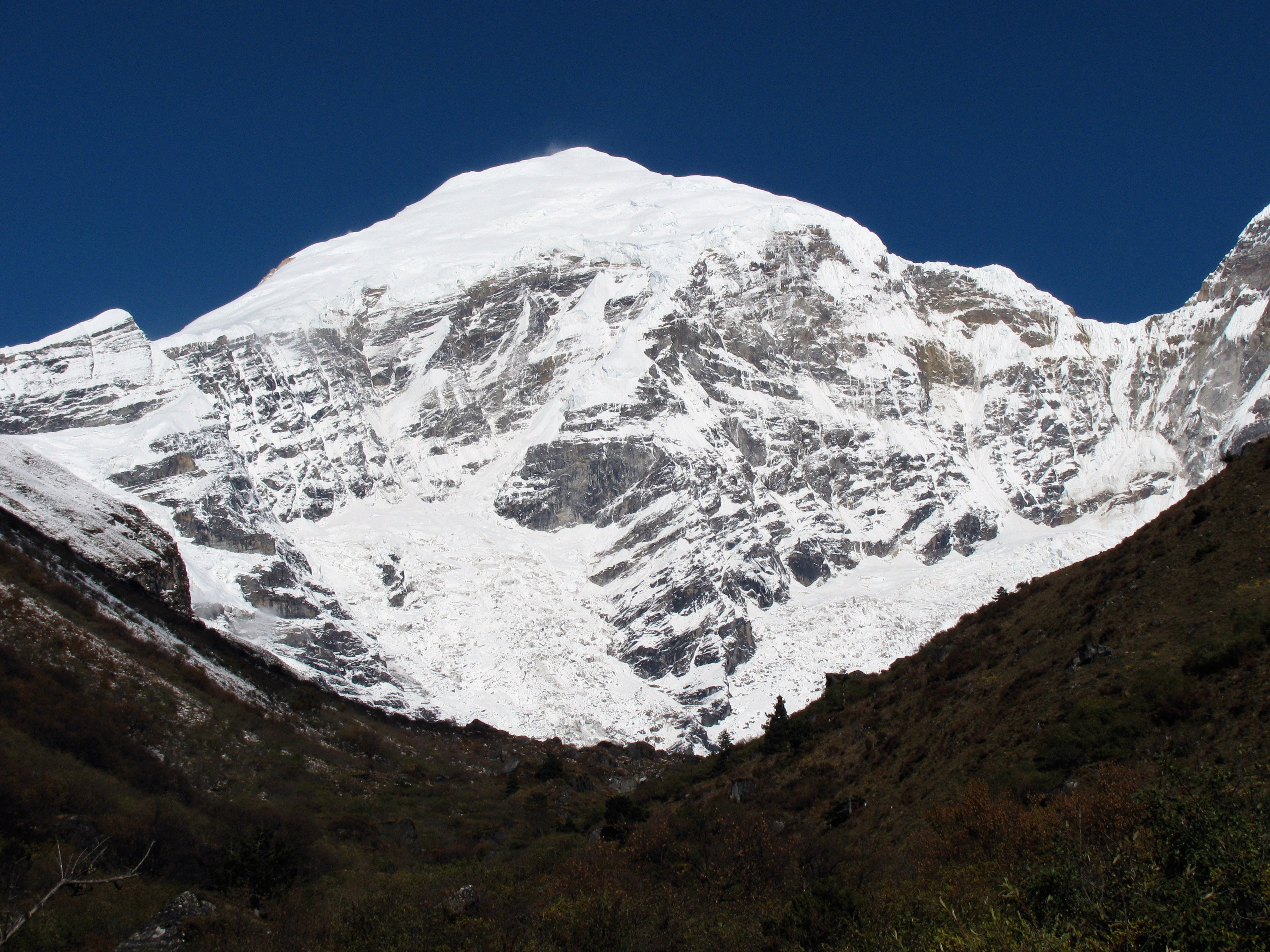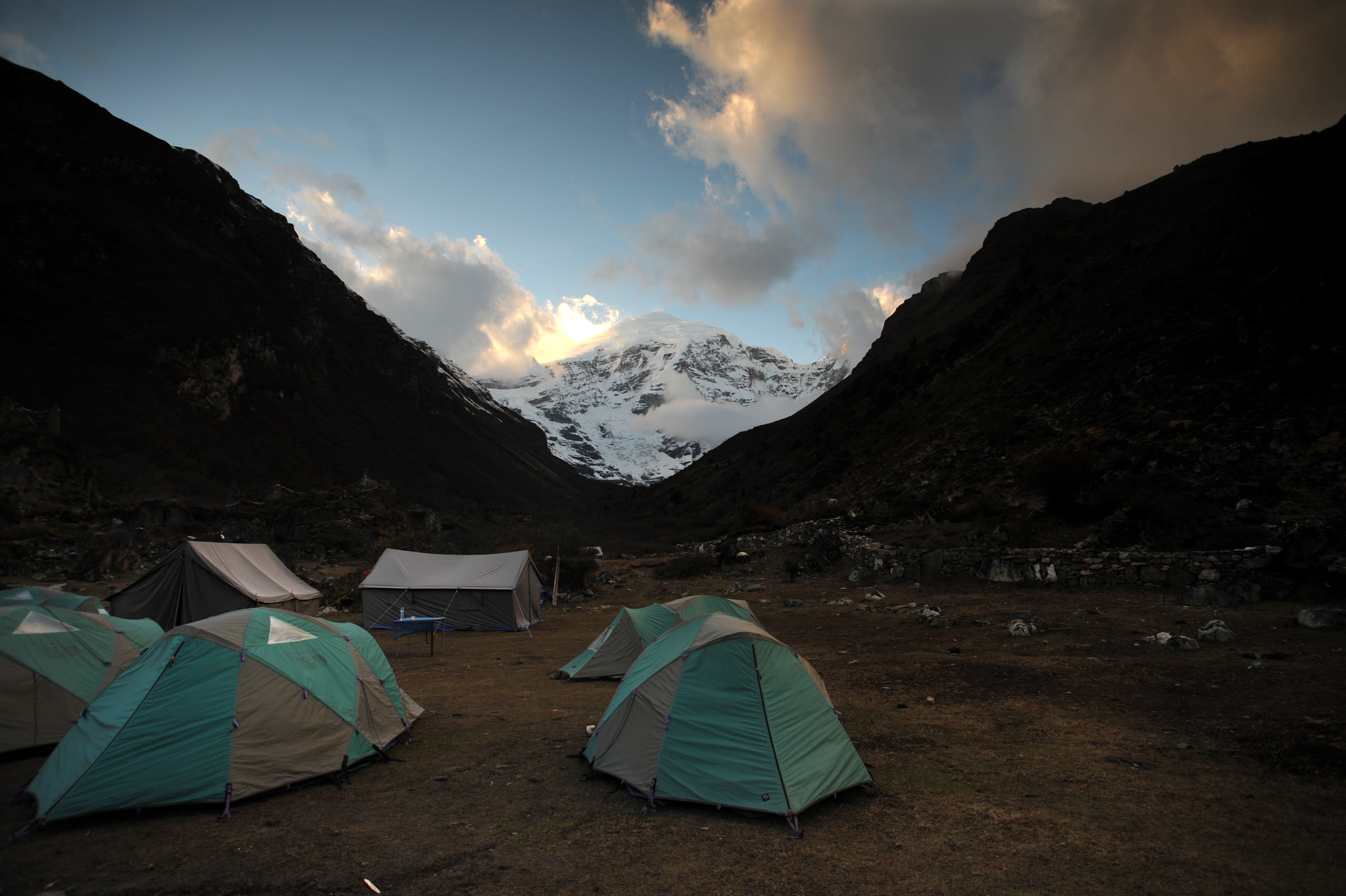Jomolhari is a stunning peak in the Bhutanese Himalayas. The local people know the peak as Chomolhari or the “Mountain of Goddess”. Jomolhari trek is equivalent to trek the Nepal’s Mount Everest base camp. The place is almost 54 kilometer away from the capital city, Thimphu.
Some Quick Facts about Jomolhari:
Location: Paro, Bhutan
Parent range: Himalaya
Elevation: 7326m (24,035 ft)
Best months to climb: April to June, and September to November
Difficulty: Medium to hard

History of Jomolhari
Previously, those who lived nearby believed Jomolhari was sacred and the residence of goddesses, and that anyone who attempted to climb it too high would be hurled down. A climber allowed the first ascent of the mountain in 1937.
Nowadays, climbers from all around the world frequently travel to Jomolhari for hiking. The Bhutanese people respect and protect this sacred site, despite its growing popularity.
How to go there
The nearest airport to Jomolhari is Paro International Airport, Bhutan. If you are from India, some direct flights are available from the major cities of India.
From USA or UK, you can go for a transit flight as there are no direct flight are available. When you are in the Paro Airport, it is a short drive from there to the starting point of the Jomolhari trekking point.
Jomolhari Trek
Jomolhari Trek is one of the most challenging and scenic treks in Bhutan. The trek takes the trekkers through the beautiful valleys, pristine forests, and high-altitude passes, offering the breathtaking views of the Himalayas and the surrounding landscape.
For experienced trekkers, this beautiful and challenging trek takes about 10 days to complete. The journey is one of Bhutan’s most beautiful and rewarding hikes despite its physical challenges. The beautiful trek ends in the Jomolhari Base Camp.
Jomolhari Base Camp
Jomolhari base camp is the final destination of the amazing Trek and is a perfect place to relax and explore the surrounding area after completing the trek. The place is the ideal place to stay nights and enjoy the beauty of the mountain.
The base camp is a great place to observe the local wildlife. Besides, it is also an ideal place to learn the history and the culture of the locals. Here, climbers can also go for rock climbing and glacier trekking.
The Jomolhari Base Camp is not only a destination of natural beauty and cultural legacy, but it also has spiritual value. A powerful goddess who is thought to live on the mountain is reported to be present there, and it is said to be a sacred place where spiritual practitioners go to meditate and seek her blessings.

Wildlife watching
Jomolhari and its surrounding area is a great place to watch wildlife. During the Jomolhari Trek, trekkers can see various species of animals and birds.
Snow Leopard:
Snow Leopard is one of the most elusive and rare species of big cats in the world. Wildlife enthusiasts appreciate seeing it because it can only be seen in the high-altitude regions of Jomolhari.
Himalayan Tahr:
Himalayan Tahr is a type of goat which is found in the high-altitude areas surrounding Jomolhari. The goat is known for its Shaggy coat and long horns.
Bharal:
People also know Bharal as Blue Sheep. In the high-altitude areas of Jomolhari, you can find the Bharal, a species of wild sheep. Trekkers often spot the Bharal, recognizable by its unique blue-gray coat, while on the trek.
Himalayan Griffon Vulture:
The Himalayan Griffon Vulture is a gigantic bird that inhabits the high-altitude regions of Jomolhari. The Bharal stands out with its bald head and broad wings.

Visit local villages during trek
Visiting the local villages during the Jomolhari trekking is a popular activity there. It is great way to learn the history and the culture of the country. Many of the villages along the trekking route have been inhabited for generations and offer a unique gimples into the traditional way of life in Bhutan.
Sometimes trekkers can drink water from the village people. Local village people serve traditional Bhutanese dishes to the trekkers, which is a great way to know the local cuisine.
Overall, the trekking is a great experience and a great way to learn the Himalaya history, local believes, Bhutanese cuisine and so much fun.


